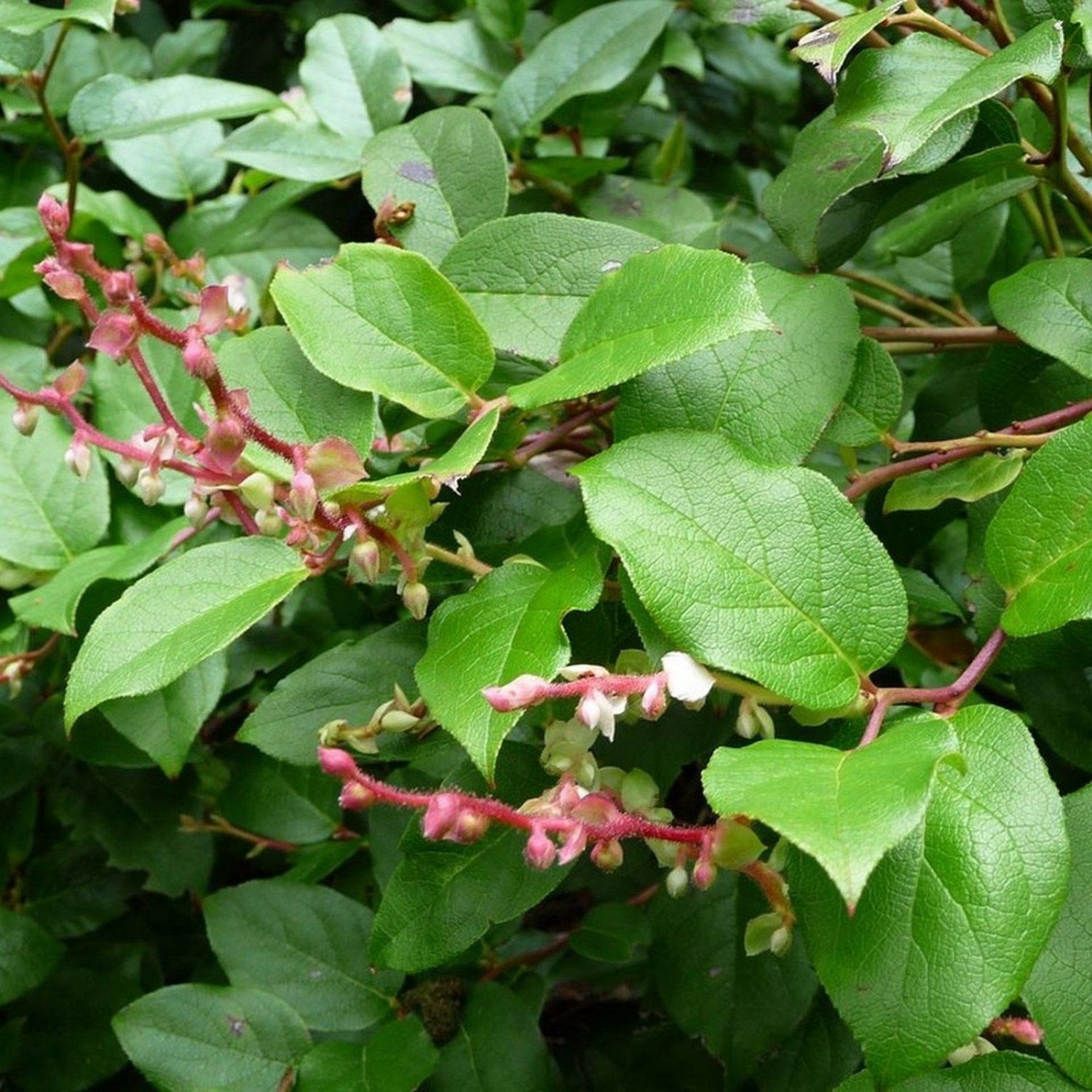The Salal Lemon Leaf Plant, a botanical wonder, offers a unique blend of traditional and modern uses, making it a captivating subject for exploration. Its distinctive characteristics, cultivation techniques, and medicinal properties unravel a fascinating narrative.
This plant, native to the Pacific Northwest, boasts a rich history of use among indigenous communities and has gained recognition in various industries today.
Salal Lemon Leaf Plant Overview

The Salal Lemon Leaf Plant (Gaultheria shallon), also known as the Shallon or Salal Berry, is a versatile evergreen shrub native to the Pacific Northwest of North America.
It is characterized by its glossy, leathery leaves with a distinct lemon-scented aroma, small pink to white flowers, and edible blue-black berries. The plant is known for its medicinal, culinary, and ornamental value.
Botanical Characteristics
- Leaves: The leaves are ovate to elliptical, 5-10 cm long and 2-4 cm wide, with serrated margins. They are dark green and glossy on the upper surface, and paler green with a prominent midrib on the underside. The leaves have a characteristic lemon-scented aroma when crushed.
- Flowers: The flowers are small, bell-shaped, and pink to white in color. They are borne in clusters of 2-5 at the ends of short stalks. The flowers bloom in the spring and are pollinated by bees and other insects.
- Berries: The berries are round to oval, 5-10 mm in diameter, and blue-black in color. They are fleshy and juicy, with a sweet and slightly tart flavor. The berries ripen in the late summer and are an important food source for birds and other wildlife.
Salal Lemon Leaf Plant Cultivation
Salal Lemon Leaf Plant cultivation requires specific conditions and techniques to ensure optimal growth and yield. Understanding its cultivation requirements, from propagation to post-harvest handling, is essential for successful cultivation.
Propagation
Salal Lemon Leaf Plant is typically propagated through cuttings. Cuttings should be taken from healthy, mature plants and placed in a rooting medium such as perlite or a mixture of perlite and peat moss. The cuttings should be kept moist and warm until roots develop.
Soil Preparation
Salal Lemon Leaf Plant prefers well-drained, acidic soil with a pH between 4.5 and 5.5. The soil should be rich in organic matter and have good aeration. Before planting, the soil should be amended with compost or other organic matter to improve fertility and drainage.
Pest Management
Salal Lemon Leaf Plant is relatively pest-resistant, but it can be susceptible to certain pests such as aphids, spider mites, and scale. Regular monitoring of the plants is important to detect and control pests early on. Organic pest control methods, such as insecticidal soap or neem oil, can be effective in controlling pests.
Harvesting
Salal Lemon Leaf Plant leaves are typically harvested when they are fully mature, which is usually in the summer. The leaves should be cut close to the stem and handled carefully to avoid bruising. Harvested leaves should be stored in a cool, humid environment until they are used.
Post-Harvest Handling
After harvesting, Salal Lemon Leaf Plant leaves should be stored in a cool, humid environment to maintain their freshness and quality. The leaves can be stored for several days in a refrigerator or for longer periods in a controlled atmosphere storage facility.
Salal Lemon Leaf Plant Health Benefits

The Salal Lemon Leaf Plant possesses an array of nutritional compounds that contribute to its health-promoting properties. It is a rich source of vitamins, minerals, antioxidants, and other beneficial substances.
Nutritional Composition
The nutritional profile of the Salal Lemon Leaf Plant includes:
– Vitamin C: A potent antioxidant that supports immune function and skin health.
– Vitamin A: Essential for vision, skin health, and immune system function.
– Iron: Vital for red blood cell production and oxygen transport.
– Calcium: Necessary for strong bones, teeth, and nerve function.
– Potassium: Regulates fluid balance, blood pressure, and muscle function.
– Antioxidants: Compounds that protect cells from damage caused by free radicals.
Medicinal Properties, Salal lemon leaf plant
The medicinal properties of the Salal Lemon Leaf Plant have been recognized for centuries in traditional medicine. Modern scientific studies have confirmed many of these traditional uses:
– Anti-inflammatory: The plant contains compounds that inhibit inflammation, making it useful for treating conditions like arthritis and asthma.
– Antimicrobial: Studies have shown that the plant extracts possess antibacterial and antifungal properties, making it effective against various infections.
– Antioxidant: The high antioxidant content of the plant helps protect cells from oxidative damage, which is linked to chronic diseases like cancer and heart disease.
– Antidiabetic: Some studies suggest that the plant may have antidiabetic properties, helping to regulate blood sugar levels.
Traditional and Modern Healthcare Practices
The Salal Lemon Leaf Plant has been used in traditional medicine for a wide range of ailments, including:
– Respiratory problems: The leaves are used in teas and syrups to relieve coughs, colds, and asthma.
– Digestive issues: The plant is believed to aid digestion and alleviate stomach pain.
– Skin conditions: The leaves are applied topically to treat skin rashes, wounds, and burns.
In modern healthcare, the plant extracts are incorporated into supplements, teas, and other products for their potential health benefits.
